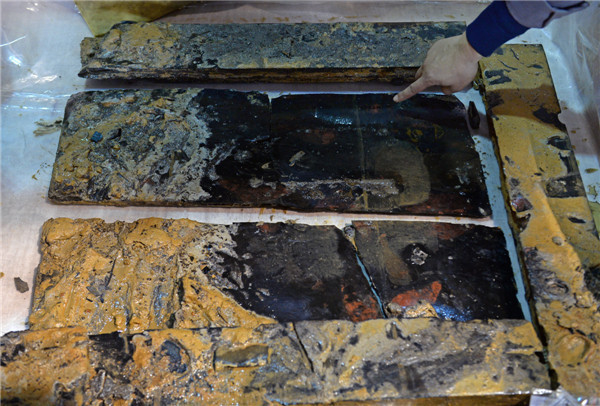 |
|
A lacquer screen was unearthed from the tomb of Haihunhou in Nanchang, Jiangxi province, on Saturday. [Photo by Wang Xiang/Xinhua] |
Chinese archaeologists claimed on Saturday to have unearthed a portrait of Confucius from a tomb that is at least 2,000 years old.
After they pieced together a broken lacquer screen found in the main chamber of the tomb, the archaeologists said, they restored two portraits, one of which is believed to be of Confucius.
"The Chinese characters on the screen include the names of Confucius, his father, Shu Lianghe, and one of his favorite disciples, Yan Hui," said Zhang Zhongli, deputy chief of the excavation team in east China's Jiangxi province. "These names are evidence that at least one of the two men painted on the screen is Confucius himself."
He said the text on the screen was probably a brief biography of Confucius, but further evidence is needed to support the hypothesis.
Screens were typical furniture in ancient Chinese homes to block wind and evil spirits and to protect privacy. They were often painted with landscapes, plants or calligraphy.